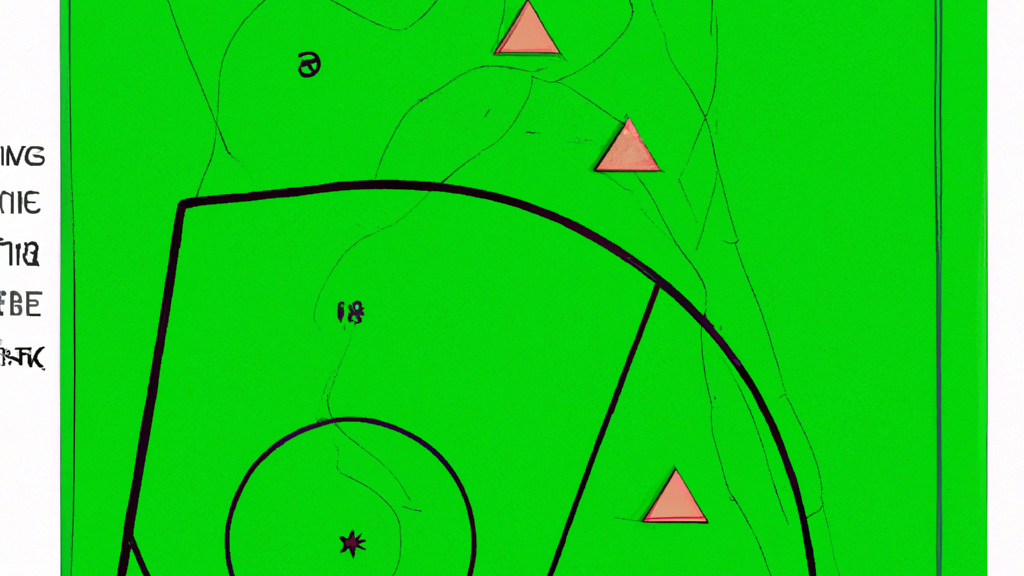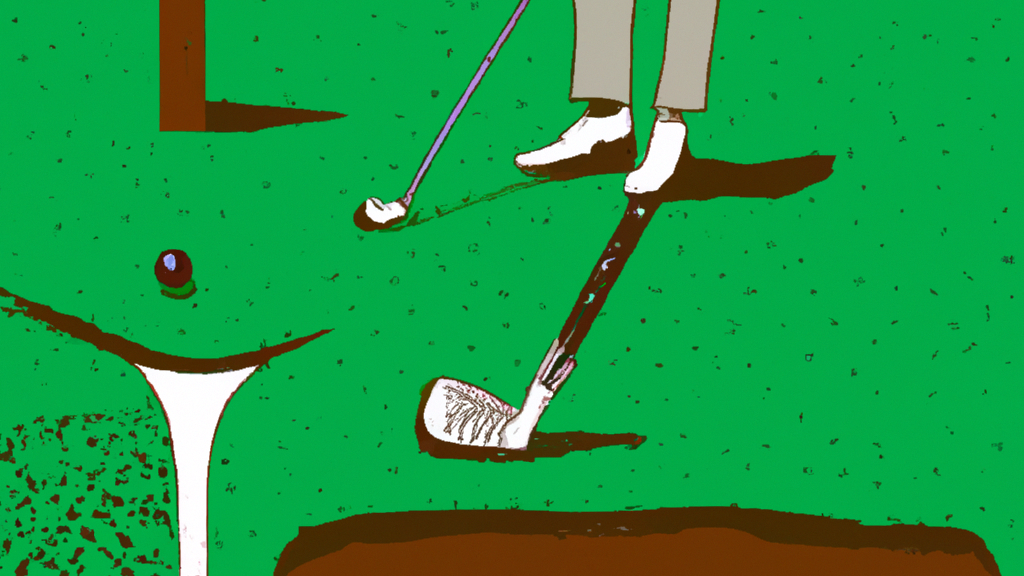HOW TO MANAGE WINTER KILL ON YOUR GOLF COURSE
Winter can be a challenging time for golf course managers, as the harsh weather conditions can cause significant damage to the turf. Winter kill is a common problem that can occur when the grass is exposed to extreme cold, frost, and snow. This can lead to brown patches, dead spots, and thinning of the turf, which can affect the playability and aesthetics of the course. However, with the right management practices, it is possible to prevent and manage winter kill on your golf course.
In this article, we will explore some effective strategies and techniques that you can use to protect your turf and maintain the quality of your golf course during the winter months. Whether you are a golf course manager, superintendent, or a passionate golfer, this guide will provide you with valuable insights and tips to help you manage winter kill on your golf course. So, let’s dive in and discover how you can keep your course in top condition all year round.freezing

HOW TO MANAGE WINTER KILL ON YOUR GOLF COURSE
Winter is a beautiful season, but it can be a nightmare for golf course managers. Winter kill is a common problem that golf course managers face during the winter season. Winter kill is the damage caused to the turfgrass due to extreme weather conditions such as freezing temperatures, snow, and ice. The damage can be severe, and if not managed properly, it can lead to the death of the turfgrass. In this article, we will discuss how to manage winter kill on your golf course.
1. Identify the Problem
The first step in managing winter kill is to identify the problem. Winter kill can be caused by a variety of factors, including low temperatures, ice, and snow. The damage caused by winter kill can vary from mild to severe. The most common signs of winter kill are brown patches on the turfgrass, dead grass, and thinning of the turfgrass. Once you have identified the problem, you can take the necessary steps to manage it.
2. Preventative Measures
Prevention is always better than cure.
The best way to manage winter kill is to prevent it from happening in the first place. Here are some preventative measures that you can take to protect your turfgrass from winter kill:
- Fertilize your turfgrass in the fall: Fertilizing your turfgrass in the fall will help it to store nutrients that it will need to survive the winter. Make sure to use a fertilizer that is high in potassium, as this will help to strengthen the turfgrass.
- Aerate your turfgrass: Aeration is the process of creating small holes in the soil to allow air, water, and nutrients to penetrate the roots of the turfgrass. Aeration will help to improve the health of your turfgrass and make it more resistant to winter kill.
- Mow your turfgrass shorter: Mowing your turfgrass shorter in the fall will help to prevent snow mold, which is a common problem that can lead to winter kill. Make sure to gradually lower the height of your mower blades over several weeks to avoid damaging the turfgrass.
- Remove leaves and debris: Leaves and debris can smother your turfgrass and prevent it from getting the air and nutrients that it needs to survive the winter. Make sure to remove any leaves and debris from your golf course before the winter season.
3. Repairing Winter Kill
If you have already experienced winter kill on your golf course, don’t worry. There are several steps that you can take to repair the damage and get your turfgrass back to its healthy state.
- Reseed the damaged areas: Reseeding is the process of planting new grass seed in the damaged areas. Make sure to choose a grass seed that is appropriate for your climate and soil type. Water the newly seeded areas regularly to help the grass seed germinate.
- Fertilize the damaged areas: Fertilizing the damaged areas will help to promote the growth of new grass. Make sure to use a fertilizer that is high in nitrogen, as this will help to promote the growth of new grass.
- Water the damaged areas: Watering the damaged areas regularly will help to promote the growth of new grass. Make sure to water the damaged areas deeply and frequently to help the grass roots grow deep into the soil.
- Use a growth regulator: Growth regulators can help to promote the growth of new grass and prevent the growth of weeds. Make sure to use a growth regulator that is appropriate for your turfgrass type.
4. Maintenance
Maintaining your golf course is essential to prevent winter kill from occurring in the future.
- Mow your turfgrass regularly: Mowing your turfgrass regularly will help to promote healthy growth and prevent the growth of weeds. Make sure to adjust your mower blades to the appropriate height for your turfgrass type.
- Water your turfgrass regularly: Watering your turfgrass regularly will help to keep it healthy and prevent it from drying out. Make sure to water your turfgrass deeply and infrequently to encourage deep root growth.
- Fertilize your turfgrass regularly: Fertilizing your turfgrass regularly will help to promote healthy growth and prevent the growth of weeds. Make sure to use a fertilizer that is appropriate for your turfgrass type.
- Aerate your turfgrass regularly: Aeration will help to improve the health of your turfgrass and make it more resistant to winter kill. Make sure to aerate your turfgrass at least once a year.
Conclusion
Winter kill is a common problem that golf course managers face during the winter season. The damage caused by winter kill can be severe, and if not managed properly, it can lead to the death of the turfgrass. The best way to manage winter kill is to prevent it from happening in the first place. If you have already experienced winter kill on your golf course, don’t worry. There are several steps that you can take to repair the damage and get your turfgrass back to its healthy state. Maintaining your golf course is essential to prevent winter kill from occurring in the future.
By following these tips, you can keep your golf course healthy and beautiful all year round.

- Three Things All Golfers Should Know About Winterkill
Winter injury can leave a lasting impact on golf course playing surfaces. Fortunately, there are techniques superintendents can use to reduce the risk of damage … - Winterkill of Turfgrasses
Jan 4, 2023 … Desiccation is most common on annual bluegrass putting greens, but can also occur on golf course fairways, lawns, and sports turf. All cool- … - The effects of winter kill on springtime golf
May 15, 2018 … In many cases, winter kill’s effects on golf course greens is … since this recent bout of winter kill is largely beyond the control of the … - Preparing golf course turf for winter – Turf
Sep 12, 2019 … Impermeable covers will protect the turf from ice cover damage, but are not necessarily a panacea for all your winter worries. Impermeable … - When to pull the trigger – Golf Course Industry
Know when the threat of winterkill requires agronomic action. … to make incorrect conclusions and wrong decisions in turf and disease management. - Winterkill on golf course update from northern Michigan – Golf Courses
May 15, 2019 … This duration of ice cover would certainly be long enough to cause damage to annual bluegrass putting greens, as 30-45 days is typically cited … - Proactive steps to prevent winterkill on turfgrass – GCMOnline.com
Sep 20, 2018 … Editor’s note: This article was originally published in the spring 2018 issue of Alabama Green Journal, a publication of the Alabama Golf Course … - Golfer FAQ: Golf Course Winterkill
weather this past winter caused grass plants to die of … also killed some of the golf course turf. … that make turf management challenging during. - Techniques for turfgrass re-establishment following winterkill …
Geotextiles can enhance spring green-up of fine bentgrass greens. Golf Course Management 56(12):28-33. Miltner, E.D., G.K. Stahnke, G.J. Rinehart and P.A. … - Golf Longmont – Longmont, CO
All winter damage can be repaired on the golf courses with warmer soil temperatures, good moisture, and fertilizer to promote turf growth. Thank you for your …
Fascinating facts about How to Manage Winter Kill on Your Golf Course you never knew
- The first recorded game of golf was played in Scotland in 1457.
- Golf balls were originally made out of wood until the mid-1800s when they began to be made out of rubber.
- The Masters Tournament, one of the four major championships in professional golf, has been held annually at Augusta National Golf Club since 1934.
- In 1971, Lee Trevino became the first player to win all three majors (the U.S Open, British Open and PGA Championship) contested that year.
- Tiger Woods is considered one of the greatest golfers ever with a total career earnings estimated at over $1 billion USD from endorsements and winnings combined.
- Country clubs originated as exclusive social clubs for wealthy individuals who wanted a place to gather and participate in leisure activities such as golfing or tennis playing





